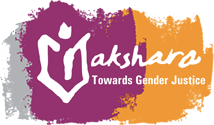SMART IS ALSO AN ENGENDERED CITY
The future is urban. There is no doubt that more people than ever before are moving into cities. India, China and Nigeria lead an unprecedented pace of urbanisation. India will have 70% of its people living in urban areas by 2050. No government can ignore this phenomenon and PM Modi had stated his vision as soon as he came to power in 2014. He announced 100 Smart Cities and instigated a race amongst the states to be in the list to receive part of the Rs 98 crores allocated for it.
Coining or using a new term carries some excitement as it holds the promise of something which will turn things or lives. Not only many state govts but enthusiastic citizens replied with suggestions. However, the plan was vague and general [http://www.smartcitieschallenge.in/what-is-a-smart-city] leading to confusion and criticism. Activists and urbanists raised questions like will it be another form of a gated city or SEZ type of colony? Will it keep the poor out? Can top down technology make a city? Will it incorporate the UN based Sustainable Development Goal 11 in making the city safe, inclusive and sustainable?
THE SQUAD
Akshara and UN Women decided to trash out such questions by inviting experts, activists and state officials to a roundtable discussion. The members of the panel were:
THE WAY AHEAD
Participants of the roundtable brought attention to many issues affecting urban women, from the organization and lack of public services to urban design choices and even the planning of overall infrastructure. A few salient points addressed and discussed by participants were:
Mobility: Mobility planning is done by a city with a “point-to-point” mindset. We need to look at transportation in isolation. We need to take a more holistic approach. How do people reach bus/ train stops? How is their experience on their preferred mode of transportation? Do they feel safe during their entire trip? Is the city easily navigable and safe for everyone at all times?
Technology: While technology empowers citizens, the smart city initiative cannot depend solely on technology. The nexus of technology and human processes is a way for people to get involved and give them access to resources they wouldn’t otherwise have access to. The challenge is to use technology creatively and efficiently. We need to engender technology into the urban planning dialogue.
Inclusive Planning: The onus of making a smart city gender friendly should not be left totally to the women’s groups; it has to be imbedded in the vision. Women city users and women’s groups should be engaged from the beginning in a collaborative environment.
Access to Resources: Restorative Justice needs to be used as a means to redistribute the resources in the city. We need to restore a balance of equality. With 60% of the population of Mumbai living on 8% of the land, we need to work with people and urban planners to better spread resources and improve access to them.




